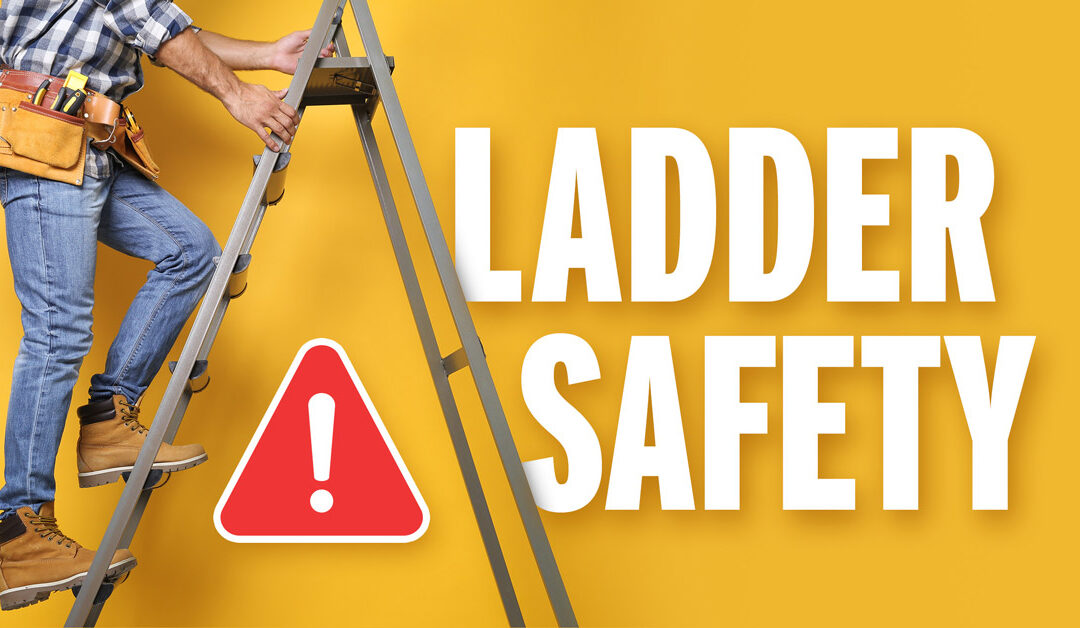When you think of dangerous tools and equipment, what comes to mind?
Hammers, chainsaws, or nail guns are what most individuals determine when asked to identify the most perceptibly hazardous tools in a workshop or construction site.
According to USClaims and OSHA, ladders are a hidden danger that affect thousands of individuals each year. According to resources, “falls on ladders… account for almost 25,000 construction site injuries and about 360 fatalities per year” (USClaims). Injuries from ladders range from mild to severe, with over 50% of serious injuries requiring long-term medical assistance or treatment.
It’s safe to say that ladders are dangerous, given falls off of ladders are the second most fatal accident resulting in workplace death, according to AccidentFund. One small mistake can send any trained professional to the hospital, or worse. That’s why staying informed on ladder safety is imperative, regardless of your work environment; ladder safety should be general knowledge, not an afterthought to the initial incident.
How can I reduce my risk of an accident while on a ladder?
There are countless precautions a workforce or individual can take to ensure ladder safety in their work environment or in their own home. Here are a few ways you can ensure your safety while using a ladder:
Proper Form
- Always face the ladder while scaling up or down
- Maintain three points of contact with the ladder at all times (two feet, one hand or one foot, two hands)
- Wear shoes with traction and wear a belt for easy tool access
- Do not use a ladder if you feel tired or dizzy (or if you are prone to falling)
Check Once, Twice, and One More Time (Just to be sure!)
- Always read the safety information and/or labels on the ladder in addition to checking the Duty Rating
- Place the base of the ladder on flat, solid ground; never place a ladder on a slippery or uneven surface
- Place ladders at least 3 feet above a support edge (add a foot for every four feet of ladder height to support edge)
- Always place a ladder away from busy areas (ensure isolation from possible interferences)
- Thoroughly inspect a ladder before using (do not use a damaged ladder, ever)
- Ensure the ladder is clean and/or remove any dirt or debris from each step
- Make sure the ladder is the correct size or model for the task at hand
- Make sure to secure extension ladders
- Check the weather before using a ladder to prevent unsafe working environments
Never EVER
- Never use alternatives to a ladder (such as chairs, stools, crates, or other unsafe objects)
- Never stand on the top steps of a ladder or put your feet on the handrails
- Do not overreach (make sure the belt loops closest to your belt buckle are inside the rails of the ladder)
- Never leave loose tools on a ladder rung
- Never scale a metal ladder when working around electrical wires
- Avoid using a ladder alone (either get help or help a coworker/find a family member to make sure you are safe while scaling)
Information provided by USClaims.com
Ladders are not always a necessity in every project. (The safest way to avoid getting injured from a ladder is to not use one in the first place, right?) Use ladders only if necessary, and make sure you are properly educated on ladder safety before doing so!
Send this blog to someone you know who uses ladders regularly or to someone who has never even used a ladder before! There is never a wrong time to learn about ladders!
Check out the Ladder Safety Toolkit.

Recent Comments